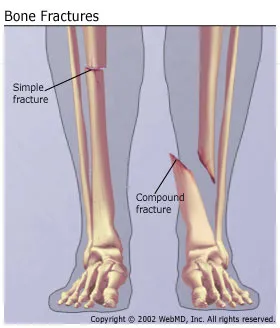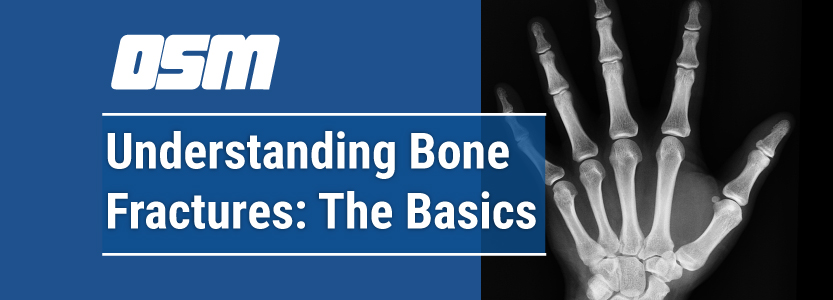Understanding Bone Fractures: The Basics
What Are Fractures?
A fracture is the medical term for a broken bone.
Fractures are common; the average person has two during a lifetime. They occur when the physical force exerted on the bone is stronger than the bone itself.
Your risk of fracture depends, in part, on your age. Broken bones are very common in childhood, although children’s fractures are generally less complicated than fractures in adults. As you age, your bones become more brittle and you are more likely to suffer fractures from falls that would not occur when you were young.
There are many types of fractures, but the main categories are displaced, non-displaced, open, and closed. Displaced and non-displaced fractures refer to the alignment of the fractured bone.
In a displaced fracture, the bone snaps into two or more parts and moves so that the two ends are not lined up straight. If the bone is in many pieces, it is called a comminuted fracture. In a non-displaced fracture, the bone cracks either part or all of the way through, but does move and maintains its proper alignment.
 Because of the unique properties of their bones, there are some defined fracture subtypes that present only in children. For example:
Because of the unique properties of their bones, there are some defined fracture subtypes that present only in children. For example:
- A greenstick fracture in which the bone is bent, but not broken all the way through
- A buckle fracture results from compression of two bones driven into each other.
- A growth plate fracture at the joint that can result in shorter bone length
These fracture subtypes can present in children and adults:
- A comminuted fracture is when the bone breaks into several pieces
- A transverse fracture is when the fracture line is perpendicular to the shaft (long part) of the bone.
- An oblique fracture is when the break is on an angle through the bone
- A pathologic fracture is caused by a disease that weakens the bone
- A stress fracture is a hairline crack
The severity of a fracture depends upon the fracture subtype and location. Serious fractures can have dangerous complications if not treated promptly; possible complications include damage to blood vessels or nerves and infection of the bone (osteomyelitis) or surrounding tissue. Recuperation time varies depending on the age and health of the patient and the type of fracture. A minor fracture in a child may heal within a few weeks; a serious fracture in an older person may take months to heal.
The Orthopedic & Sports Medicine Center of Oregon is an award-winning, board-certified orthopedic group located in downtown Portland Oregon. We utilize both surgical and nonsurgical means to treat musculoskeletal trauma, spine diseases, sports injuries, degenerative diseases, infections, tumors and congenital disorders.
Our mission is to return our patients back to pain-free mobility and full strength as quickly and painlessly as possible using both surgical and non-surgical orthopedic procedures.
Our expert physicians provide leading-edge, comprehensive care in the diagnosis and treatment of orthopedic conditions, including total joint replacement and sports medicine. We apply the latest state-of-the-art techniques in order to return our patients to their active lifestyle.
If you’re looking for compassionate, expert orthopedic surgeons in Portland Oregon, contact OSM today.
Phone:
503-224-8399
Address
17355 Lower Boones Ferry Rd Suite 100A
Lake Oswego, OR 97035
Hours
Monday–Friday



